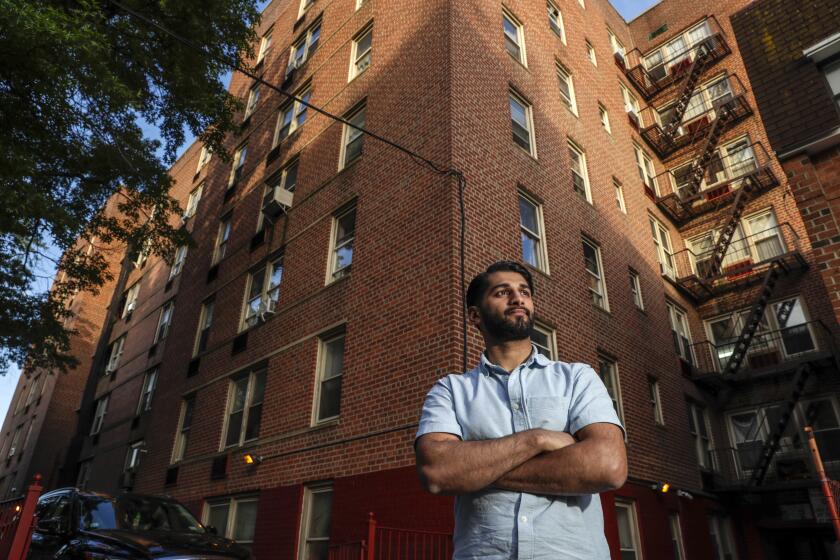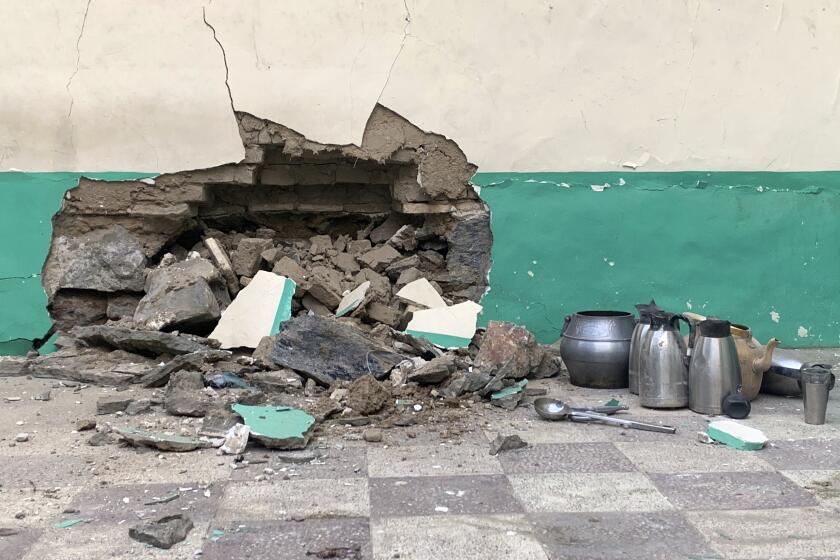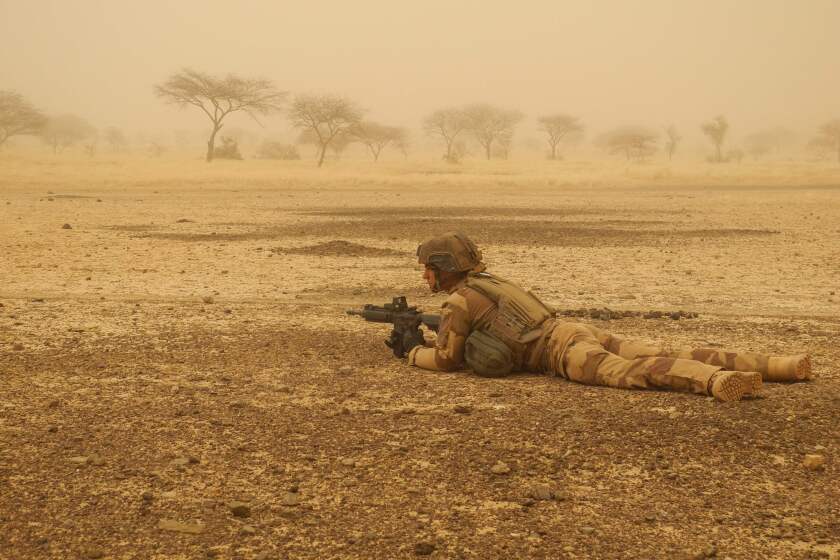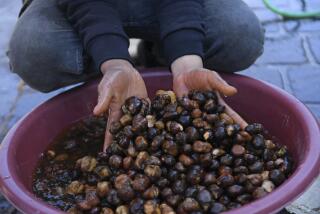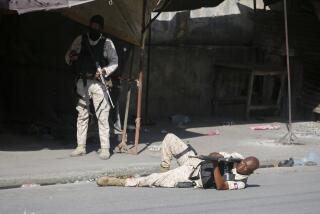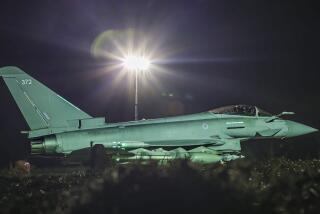A foiled prison break brings a sense of deja vu — and fears of an Islamic State resurgence
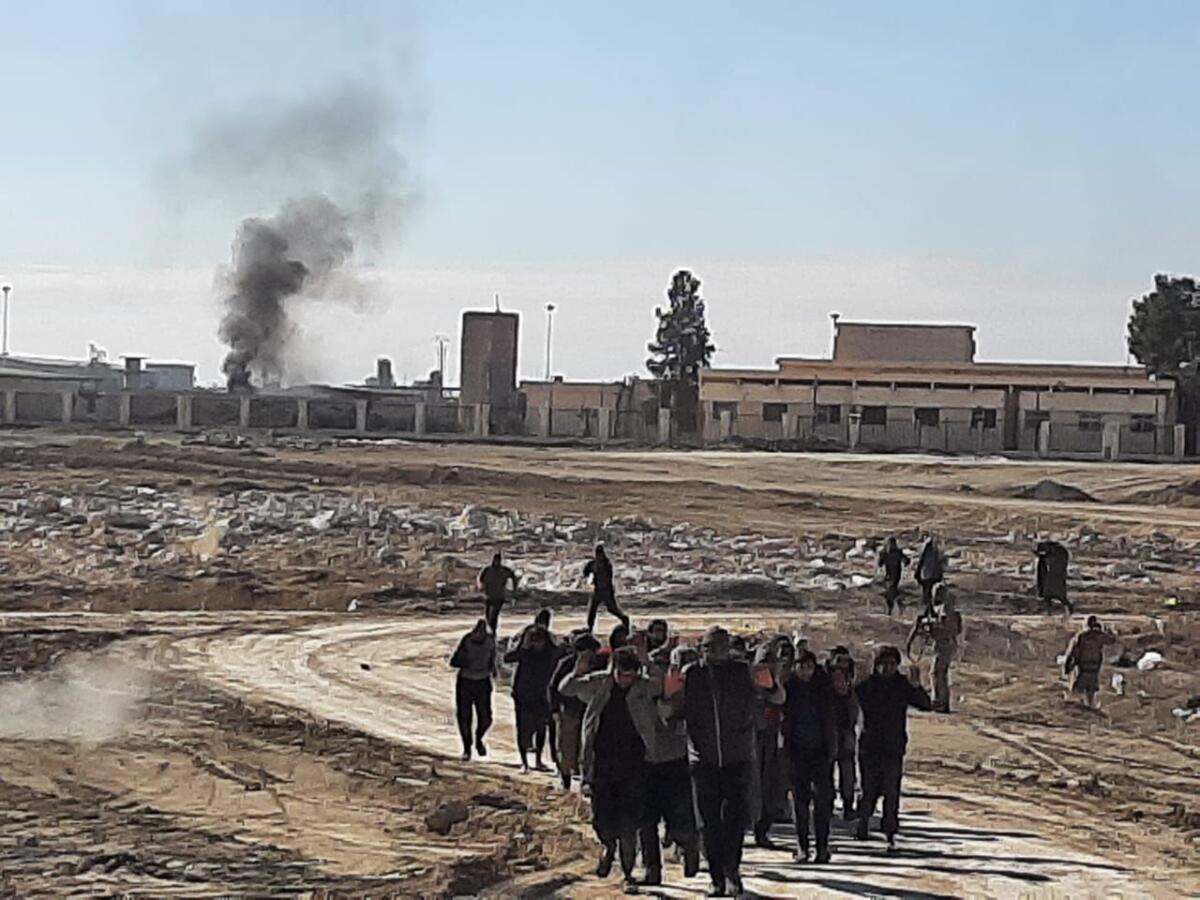
The two trucks raced toward the prison and then split up. One hurtled into the gates, the other the security wall, before both erupted in fireballs of metal and masonry. With the perimeter breached, other suicide attackers swarmed inside, toting weapons for themselves and the fellow jihadists they aimed to release. They remained barricaded inside for nearly a week until their defeat Wednesday by U.S.-backed fighters.
The assault by more than 100 Islamic State extremists on Ghweiran prison, a detention center in northeast Syria that holds thousands of their comrades, marked the most sophisticated attack the group has carried out since it was routed in the region almost three years ago — and could be a harbinger of its resurgence.
Ghweiran prison, on the edge of the city of Hassakeh, is the largest of 14 such detention facilities in the region under the control of the U.S.-backed Syrian Democratic Forces, or SDF. It houses more than 3,000 suspected fighters from Islamic State, also known as ISIS, as well as hundreds of boys, some as young as 10 — all of them crammed together in the buildings of a former engineering college.
The battle to retake the prison from its attackers ended Wednesday after the SDF besieged the last building still in extremist hands, while forces drawn from a U.S.-led coalition partnered with the SDF-deployed Apache helicopters and ground troops in Bradley fighting vehicles. British forces provided further support. The SDF said about 1,600 of the prisoners had given themselves up. Those in Ghweiran’s northern wing, including an unknown number of the boys who were housed nearby and kidnapped by the militants to use as hostages, had refused to surrender until late afternoon.
Newroz Ahmad, the commander of the female wing of the Kurdish militia, said in a press conference on Wednesday afternoon that the prison break was quickly contained, with the SDF bringing 10,000 fighters in as reinforcements.
With the prison surrounded, she said, “we gradually tightened the noose.”
“Those who clashed with our forces were killed, and those who did not and surrendered were taken to other [detention] centers.”
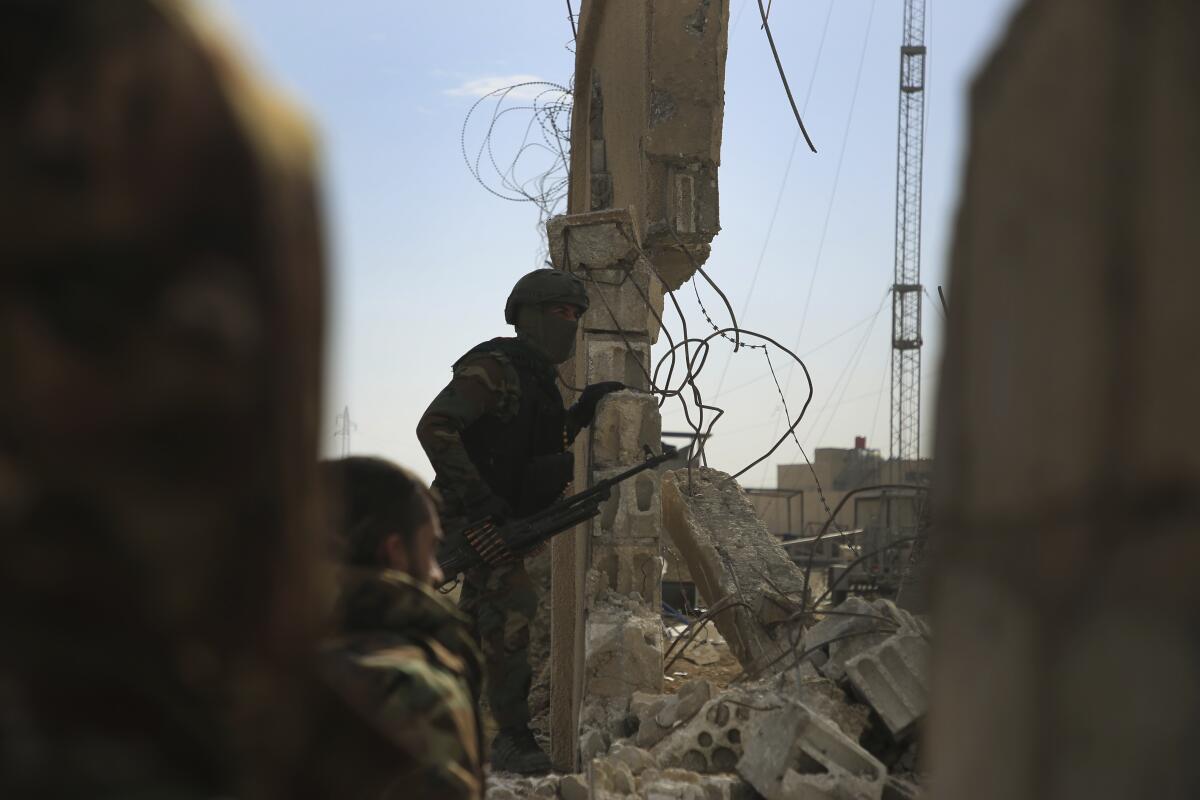
The fighting had also spread beyond the prison to adjacent neighborhoods. SDF officials said 30 of its members were killed in the fighting; Ahmad said the tally of Islamic State dead was still unclear.
Meanwhile, 45,000 residents have been forced to flee their homes since the attack began Thursday night, the United Nations said. Aid efforts were hampered by an SDF-imposed round-the-clock curfew and ban on all movement in Hassakeh, and a 12-hour nighttime curfew on other parts of northeast Syria.
The attack was eerily reminiscent to one on the notorious Abu Ghraib prison outside Baghdad in 2013, when Islamic State set free more than 500 of its members in an assault that heralded the group’s rise. The new prison break raises the question of whether the group is ready once again to mount the signature operations — fielding waves of fighters, suicide bombers and explosives-laden vehicles — that enabled it to control a full third of both Syria and Iraq and establish a self-declared caliphate the size of Britain.
The group was toppled in 2019 after the SDF, working with the U.S.-led coalition, cornered the jihadists in the village of Baghouz, in southeast Syria. Though some Islamic State fighters — perhaps as many as 10,000 — escaped to the remote shadowlands straddling Iraq and Syria, they were considered a spent force reduced to hit-and-run attacks, kidnappings and assassinations.
A young man arrested in a terrorism plot inspired by Islamic State visited his former jailers to thank them for steering him down a better path.
Thursday’s operation against Ghweiran prison was “profoundly different,” said Charlie Winter, an expert on Islamic State. “This is just completely off the charts compared to the scale of operations ISIS has engaged in for well over two years.”
Whether it heralds a full-bore comeback, however, is too early to tell.
“We’re still a long way off from analogies to 2013-2014, when Islamic State began seizing and controlling territory,” researcher Aymenn Tamimi said, adding: “Depending on how many operatives Islamic State got out, it could lead to larger-scale operations.”
Coalition leaders insist that, far from demonstrating Islamic State’s resurgence, the assault on Ghweiran prison showed the group’s weakness.
The Islamic State group says its members are responsible for a deadly suicide bombing on a Shiite mosque in southern Afghanistan.
“In their desperate attempt to display relevance, Daesh delivered a death sentence for many of their own who participated in this attack,” coalition commander U.S. Maj. Gen. John W. Brennan Jr. said Monday, using the Arabic acronym for Islamic State. He added that the group was forced to resort to “poorly conceived attempts” such as the Ghweiran attack for survival.
“While Daesh remains a threat, it is clearly no longer the force it once was.”
Groups tracking Islamic State activity say the number of its attacks has fallen in Iraq and Syria since the beginning of last year.
“Was this lull in operations because they were preparing for something like this?” said Aaron Zelin, a fellow at the Washington Institute for Near East Policy. He said this could be the first in a series of go-for-broke operations by the group to regain momentum.
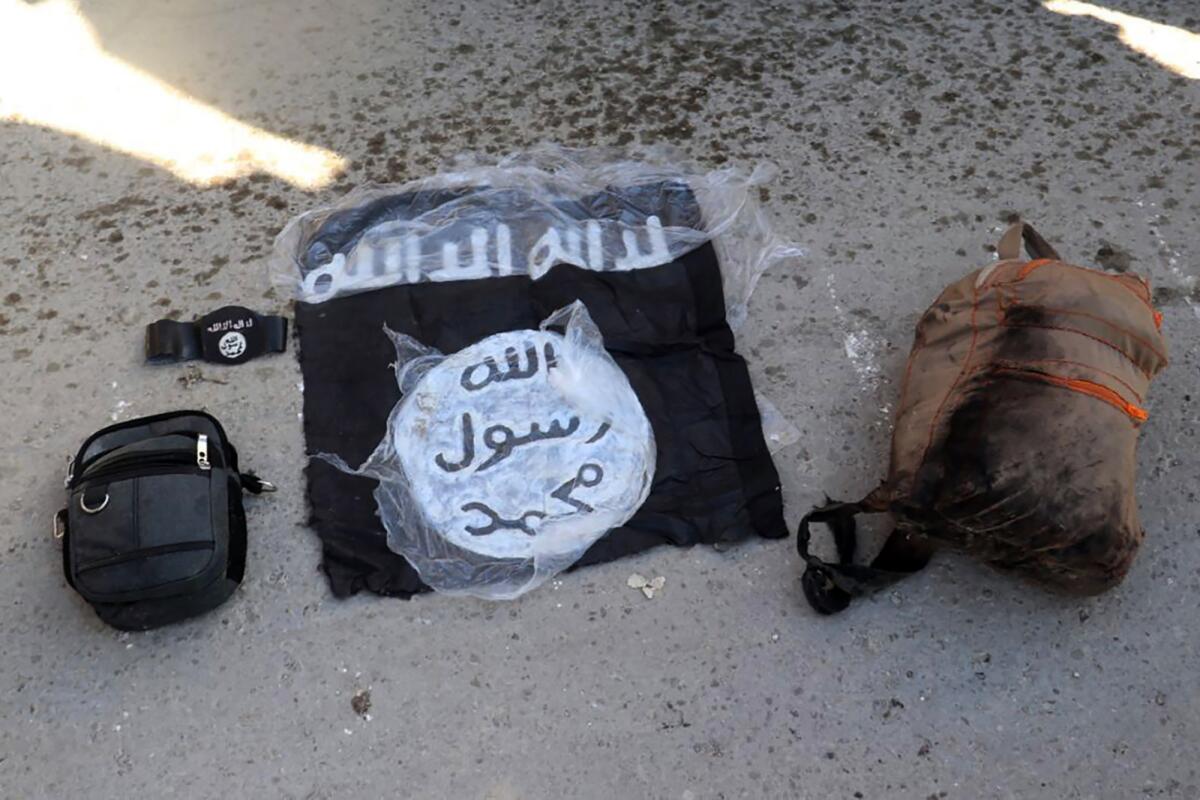
Others say the Ghweiran operation indicates that Islamic State retains a base of support in the area.
“When Daesh hits the prison with such strength and coordination, that means there’s a lot of Daesh supporters in the area,” said Rami Abdul Rahman, who heads the Syrian Observatory for Human Rights, a British-based watchdog group that tracks combat in the country. Kurdish officials have also said that Islamic State sleeper cells were involved; there are reports the group attacked in other areas to siphon off SDF forces to other places and reduce pressure on the prison siege.
Islamic State has repeatedly vowed to break out prisoners since its defeat at Baghouz. Since 2013, the group has carried out 22 operations targeting prisons, according to research company Jihad Analytics. Ghweiran was already a target: In November, the SDF foiled a plot against the prison that also involved car bombs and smuggling in arms.
The new operation Thursday night began like the Abu Ghraib assault nine years ago with two suicide bombers in trucks. After the detonation, four other teams sprang into action. One blew up two trucks at a nearby fuel depot as a decoy; the others locked down roads leading to the prison and attacked SDF reinforcements. The prisoners rioted and burned blankets.
Breaking News
Get breaking news, investigations, analysis and more signature journalism from the Los Angeles Times in your inbox.
You may occasionally receive promotional content from the Los Angeles Times.
Video uploaded by Amaq, a news outlet affiliated with Islamic State, shows scenes of bedlam. Militants scream, “God is great!” as they race across the prison’s courtyard, burst through a door and subdue the guards. Nearby, other fighters ram the rear of a pickup truck into a wall to punch another hole in the prison’s perimeter. Another clip shows some of the fighters’ captives and the bloodied corpses of SDF members.
U.S. troops, part of a contingent that remained in Syria after the fall of Baghouz, joined the fray, with Bradley fighting vehicles providing cover for advancing SDF forces while Apache helicopters conducted airstrikes on various parts of the complex. The casualties from those strikes remain unclear, but Human Rights Watch said boys it was in touch with inside the prison described cowering in rooms for six days with no food or water before a missile attack and Apache gunfire killed and wounded some of them.
Ahmad said the SDF had taken precautions while advancing so there would be no harm to civilians.
Some 800 Islamic State prisoners managed to escape, Amaq said Saturday, while those inside commandeered weapons and vehicles in preparation for the counterattack.
“Your brothers of the Islamic State have fulfilled their promise. … They broke the shackles of imprisonment, tore down the walls of Ghweiran prison and succeeded in releasing hundreds of prisoners,” says one masked militant in a video purportedly taken inside the prison Saturday.
France’s president says the head of the Islamic State in the Greater Sahara has been killed.
Islamic State’s focus on prisons reflects the growing crisis over its detainees in the region.
After the 2013 battle in Baghouz, those suspected of having Islamic State links, along with their families, were sardined in hastily prepared camps and detention centers scattered among cities and villages under SDF control; Human Rights Watch puts the numbers of prisoners at anywhere from 11,000 to 12,000. More than 60,000 of their family members remain stuck in refugee camps under horrific conditions tantamount to “torture, inhuman and degrading treatment,” according to a U.N. report last year. More than one-fifth of the detainees are foreigners from almost 60 other nations that have generally refused to repatriate them.
“This all ties into the issue of the world having outsourced Islamic State prison-keeping to a militia, which is a strange situation that will come with security flaws,” said Aron Lund, a fellow at the Century Foundation.
“When detainees are housed 3 to a bed ... no legal process to have an idea when they will be tried in a court of law or how long their sentences will be, their frustration and anger and despair mounts,” Anne Speckhard, director of the International Center for the Study of Violent Extremism, wrote in an email. “Some begin to talk about the futility of trying to return home and see returning to ISIS as their only hope. And of course ISIS takes full advantage.”
And even though the SDF has regained control of Ghweiran, Islamic State will no doubt portray it as a win.
“Yes, it failed in a material sense, but symbolically it’s a big success,” said Winter, the Islamic State expert. “It will go down in the annals of ISIS’ history as a big victory.”
More to Read
Start your day right
Sign up for Essential California for news, features and recommendations from the L.A. Times and beyond in your inbox six days a week.
You may occasionally receive promotional content from the Los Angeles Times.
